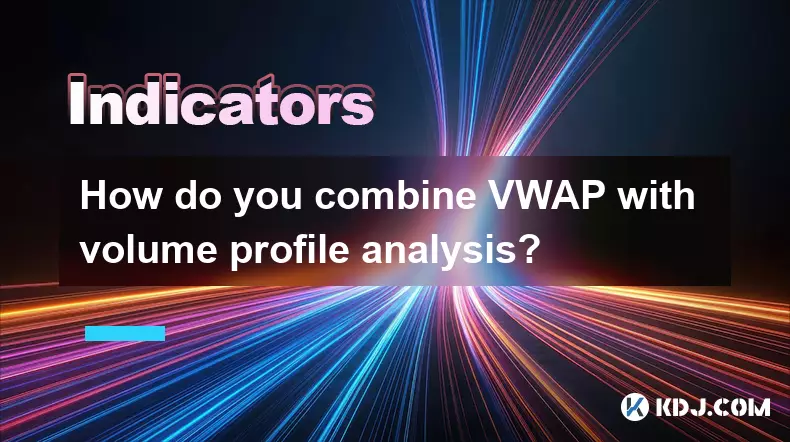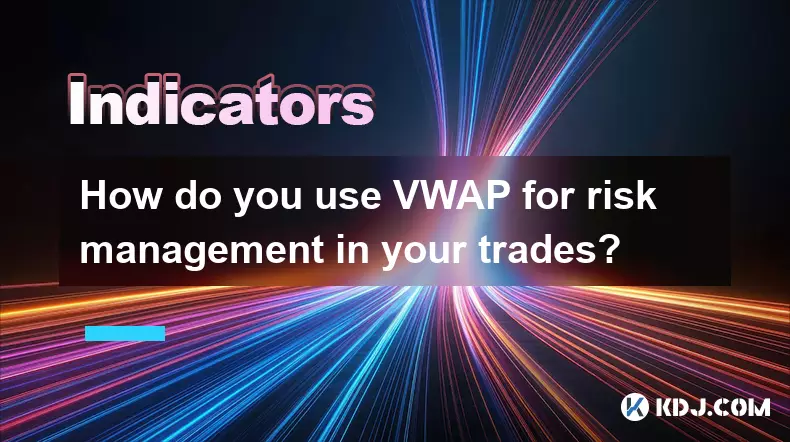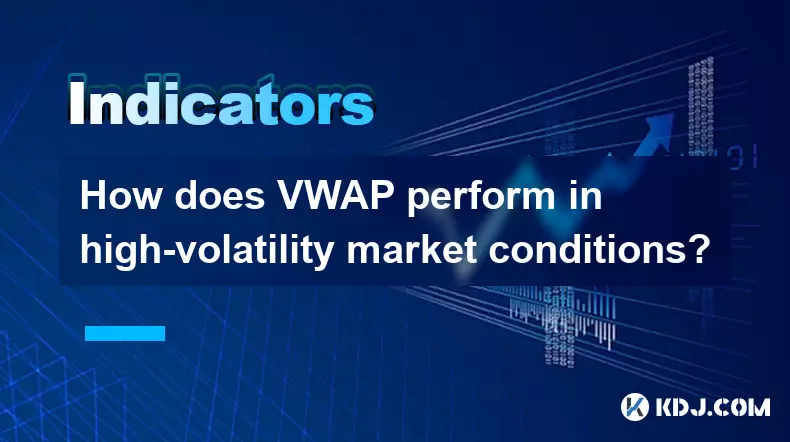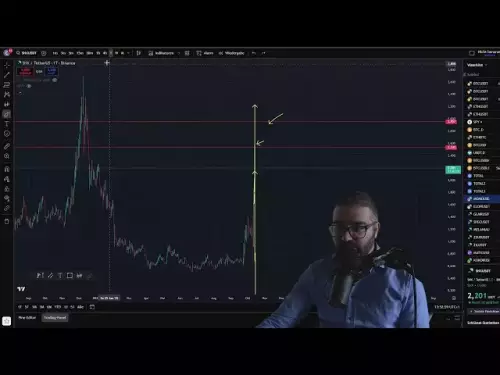-
 bitcoin
bitcoin $115692.075601 USD
5.13% -
 ethereum
ethereum $4162.931611 USD
11.68% -
 bnb
bnb $1310.063287 USD
17.56% -
 tether
tether $1.000983 USD
0.00% -
 xrp
xrp $2.534505 USD
8.16% -
 solana
solana $198.235737 USD
13.49% -
 usd-coin
usd-coin $1.000236 USD
0.02% -
 dogecoin
dogecoin $0.207352 USD
12.89% -
 tron
tron $0.323043 USD
3.62% -
 cardano
cardano $0.701559 USD
11.88% -
 hyperliquid
hyperliquid $39.924597 USD
8.30% -
 chainlink
chainlink $18.934457 USD
11.56% -
 ethena-usde
ethena-usde $1.000552 USD
0.02% -
 stellar
stellar $0.340575 USD
7.05% -
 bitcoin-cash
bitcoin-cash $545.011757 USD
8.86%
How do you combine VWAP with volume profile analysis?
Combining VWAP and volume profile enhances trading decisions by revealing key support/resistance levels where institutional activity clusters, improving entries, exits, and risk management.
Oct 11, 2025 at 10:18 pm

Understanding the Integration of VWAP and Volume Profile
1. The combination of Volume Weighted Average Price (VWAP) and volume profile analysis offers traders a deeper insight into market structure by merging time-based price action with volume distribution across specific price levels. VWAP calculates the average price weighted by volume over a defined period, typically a single trading session, making it a benchmark for institutional execution. When layered with volume profile, which displays traded volume at individual price levels, the result is a multidimensional view of supply and demand zones.
2. Traders use VWAP to assess whether prices are above or below the average transaction cost for the day. A price trading above VWAP suggests bullish sentiment, while a price below indicates bearish pressure. However, this signal gains more significance when aligned with high-volume nodes identified in the volume profile. For instance, if price approaches a high-volume node and also converges near the VWAP line, it may indicate a strong area of potential support or resistance where large orders have historically been executed.
3. The synergy between these tools becomes especially useful during low volatility periods. In such environments, price often oscillates around VWAP, and volume profile highlights the central tendency of that range. By identifying the Point of Control (POC)—the price level with the highest traded volume)—traders can anticipate reversals or continuations depending on how price interacts with both the POC and VWAP simultaneously.
Practical Applications in Day Trading
1. Day traders apply this dual methodology to refine entry and exit points. When price deviates significantly from VWAP and reaches a low-volume node on the profile (a 'value area low' or VAL), it may suggest an overextended move. If the deviation coincides with thin volume, the likelihood of a reversion toward the VWAP increases, especially if the broader trend supports mean reversion.
2. Conversely, a breakout above a high-volume node accompanied by price moving decisively above VWAP can signal strong momentum. This scenario often attracts short-term participants looking to ride the wave of institutional buying. Confirmation comes when subsequent candles hold above both the POC and VWAP, reinforcing the validity of the breakout.
3. Some traders set dynamic stop-loss levels based on deviations from VWAP in conjunction with volume profile edges. For example, placing a stop just beyond a low-volume node opposite the trade direction adds context to risk placement, ensuring stops aren’t set arbitrarily but rather at structurally relevant levels.
Identifying Institutional Activity Through Combined Signals
1. Institutional players often execute large orders near VWAP to minimize market impact, and their activity tends to cluster around high-volume nodes visible in the volume profile. Observing repeated price reactions at the intersection of VWAP and the POC can reveal hidden order flow patterns not evident through either indicator alone.
2. Gaps between value areas—known as low-volume nodes or 'voids'—carry extra weight when price moves away from VWAP into these regions. These zones lack significant historical trading activity, increasing the probability of rapid price movement back into denser volume regions. Traders monitor such gaps closely when VWAP acts as a magnet pulling price back toward equilibrium.
3. During news events or macroeconomic releases, temporary imbalances push price far from VWAP. However, once volatility settles, price frequently returns to test prior high-volume zones. The speed and manner of this return—whether aggressive or gradual—can be analyzed against volume profile structure and proximity to VWAP to determine continuation or reversal potential.
Common Questions
What does it mean when VWAP flattens near the Point of Control?A flattening VWAP near the POC suggests balanced buying and selling pressure, often indicating consolidation. This confluence highlights a critical decision point where breakouts are more likely to gain traction if volume expands beyond the established value area.
Can VWAP and volume profile be used effectively in crypto markets?Yes, particularly on major cryptocurrency pairs with sufficient liquidity. Exchanges like Binance or Coinbase provide granular tick data necessary for accurate VWAP and volume profile calculations. Due to the 24/7 nature of crypto, extended sessions require careful anchoring of VWAP to meaningful start points such as UTC midnight or exchange open.
How do you adjust VWAP when using non-standard session times?Traders redefine the starting point of the VWAP calculation to align with their preferred trading window. For instance, instead of resetting daily at midnight, some anchor VWAP to the beginning of the New York session or another high-liquidity period. This adjusted VWAP must then be interpreted alongside a volume profile built over the same timeframe for consistency.
Disclaimer:info@kdj.com
The information provided is not trading advice. kdj.com does not assume any responsibility for any investments made based on the information provided in this article. Cryptocurrencies are highly volatile and it is highly recommended that you invest with caution after thorough research!
If you believe that the content used on this website infringes your copyright, please contact us immediately (info@kdj.com) and we will delete it promptly.
- XRP Price Prediction: Weekend Rollercoaster or Rally?
- 2025-10-12 08:45:16
- Bittensor (TAO): Super Bullish Signals Point to Potential 2x Rally
- 2025-10-11 10:25:12
- Silver Price Correction: Navigating the Dip & Identifying Key SEO Keywords
- 2025-10-11 10:25:12
- Decoding Crypto Trends: Bittensor's Bull Run, Cardano's Dip, and LivLive's Presale Buzz in 'Uptober 2025'
- 2025-10-12 08:45:16
- MoonBull: The Crypto Meme Coin Promising 1000x Gains?
- 2025-10-11 10:30:01
- Crypto Payroll Revolution: Stablecoins, Altcoins, and the Future of Salary Payments
- 2025-10-11 10:30:01
Related knowledge

What's the main difference between VWAP and TWAP?
Oct 12,2025 at 11:54am
Understanding VWAP and Its Role in Crypto Trading1. Volume Weighted Average Price (VWAP) is a trading benchmark that calculates the average price of a...

How do you identify exhaustion moves using VWAP and its bands?
Oct 12,2025 at 08:00am
Understanding the Role of Decentralized Exchanges in Crypto Trading1. Decentralized exchanges (DEXs) operate without a central authority, allowing use...

What are the main advantages of using VWAP over EMA?
Oct 11,2025 at 02:18am
Main Advantages of Using VWAP Over EMA1. Volume-Weighted Average Price (VWAP) incorporates trading volume into its calculation, offering a more accura...

How do you use VWAP on different chart types like Heikin Ashi?
Oct 11,2025 at 05:01pm
Understanding VWAP in the Context of Heikin Ashi Charts1. The Volume Weighted Average Price (VWAP) is a powerful analytical tool commonly used by trad...

How do you use VWAP for risk management in your trades?
Oct 11,2025 at 02:54am
Understanding VWAP as a Dynamic Benchmark1. The Volume Weighted Average Price (VWAP) serves as a crucial reference point in intraday trading by reflec...

How does VWAP perform in high-volatility market conditions?
Oct 10,2025 at 08:00pm
Understanding VWAP in Turbulent Market Phases1. Volume-Weighted Average Price (VWAP) serves as a benchmark for institutional traders aiming to assess ...

What's the main difference between VWAP and TWAP?
Oct 12,2025 at 11:54am
Understanding VWAP and Its Role in Crypto Trading1. Volume Weighted Average Price (VWAP) is a trading benchmark that calculates the average price of a...

How do you identify exhaustion moves using VWAP and its bands?
Oct 12,2025 at 08:00am
Understanding the Role of Decentralized Exchanges in Crypto Trading1. Decentralized exchanges (DEXs) operate without a central authority, allowing use...

What are the main advantages of using VWAP over EMA?
Oct 11,2025 at 02:18am
Main Advantages of Using VWAP Over EMA1. Volume-Weighted Average Price (VWAP) incorporates trading volume into its calculation, offering a more accura...

How do you use VWAP on different chart types like Heikin Ashi?
Oct 11,2025 at 05:01pm
Understanding VWAP in the Context of Heikin Ashi Charts1. The Volume Weighted Average Price (VWAP) is a powerful analytical tool commonly used by trad...

How do you use VWAP for risk management in your trades?
Oct 11,2025 at 02:54am
Understanding VWAP as a Dynamic Benchmark1. The Volume Weighted Average Price (VWAP) serves as a crucial reference point in intraday trading by reflec...

How does VWAP perform in high-volatility market conditions?
Oct 10,2025 at 08:00pm
Understanding VWAP in Turbulent Market Phases1. Volume-Weighted Average Price (VWAP) serves as a benchmark for institutional traders aiming to assess ...
See all articles










































































